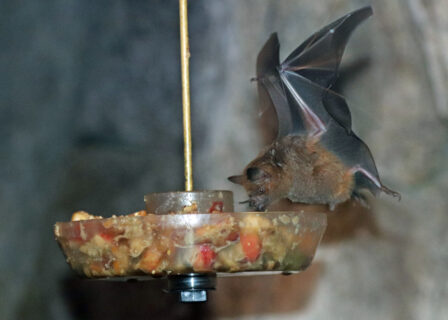Happy Bat Week!

With Bat Week here, we wanted to share more about our batty friends and dispel any myths you may know about them, as well as share how you can help save them in the wild.
Here at the Houston Zoo, we have one species of bat located inside of the John P. McGovern Children’s Zoo, the Seba’s short-tailed bat. A lot of people assume all bats are blood feeders, but the Seba’s short-tailed bat actually eats fruit, nectar, and some bugs here and there. A popular myth about bats is that they carry rabies and are blind, but both of these statements are false.
Lisa, one of the keepers who works with our bats in the Children’s Zoo shares, “I love enriching our bats with different foods, browse, and items that increase bat activity and engages guests in a positive way.”

Bats actually make great pollinators because many of them feed on fruit, flowers, and nectar. So just like a hummingbird or bee, they take pollen from flower to flower to help our plants grow and thrive. They are also the only flying mammal and one of the most resilient animals. Here in Texas, all species of bats are insect eaters and each can eat thousands of insects in one night – including those pesky mosquitos. They make great pest control!
You can help protect our bats and take action to save our wildlife by buying or building a bat house to encourage bats to roost in your neighborhood and have a safe place to stay. Even though palm trees can be unsightly when their leaves die, it is helpful to leave those leaves on the tree to encourage them to roost there. You can also offer a fresh water source, especially during the drier part of the season, for bats to safely come drink if there is a shallow pan of water as they emerge each evening.
